Introduction
In a world where health challenges are increasingly prevalent, understanding the multifaceted relationship between body fat, nutrition, exercise, and overall well-being is essential for fostering a thriving workplace environment. Excess body fat is not just a personal concern; it poses significant health risks that can impact productivity and morale within teams. By prioritizing effective fat loss strategies and promoting healthy lifestyle choices, organizations can empower their employees to enhance their physical health and emotional resilience.
This article delves into the vital components of achieving and maintaining a healthy body fat percentage, including:
- Creating a caloric deficit
- Implementing nutrition strategies
- Incorporating exercise
- Managing sleep and stress
Each element plays a crucial role in cultivating a culture of health that benefits both individuals and the organization as a whole, encouraging HR Benefits Managers to take proactive steps in supporting their teams' well-being.
Understanding Body Fat: Importance and Health Implications
The influence of body fat on overall well-being cannot be overstated. Excess body fat is associated with a range of serious medical issues, including heart disease, diabetes, and joint complications. Alarmingly, 7.9% of Hispanic adults face severe obesity, illustrating a pressing issue that requires attention.
Understanding how to lose 5 percent body fat in 2 weeks is crucial; it can act as a powerful motivator to pursue effective fat loss strategies and enhance overall workplace performance. Studies published in journals such as “Preventive Medicine” and “Workplace Health & Safety” reveal that employees who engage in regular exercise—specifically, at least 30 minutes three times per week—are more likely to report feeling motivated, engaged, and emotionally positive at work. These findings underscore the multifaceted benefits of exercise, which not only reduce fatigue and stress but also promote a healthier emotional state, minimizing negative emotions like anger and anxiety.
Moreover, involvement in workplace exercise initiatives has been linked to a decrease in absenteeism and presenteeism, emphasizing the significance of promoting a culture of well-being within organizations. As noted by medical experts, obesity is believed to arise from a complex interplay of physical, psychological, environmental, and genetic factors, emphasizing the need for a holistic approach to well-being. This is especially significant for HR Benefits Managers, who play a pivotal role in implementing workplace wellness initiatives.
The NHANES survey offers crucial insights into obesity trends and consequences that can inform effective workplace policies. Additionally, the World Health Organization (WHO) has recognized the urgent need to address the global obesity crisis, endorsing targets aimed at halting the rise of diabetes and obesity by 2025. Their acceleration plan aims to generate political momentum for sustainable change, reinforcing the need for collective action.
By striving for a body fat percentage that aligns with your fitness goals and understanding how to lose 5 percent body fat in 2 weeks while promoting regular exercise within the workplace, you not only enhance your personal wellness but also contribute to a healthier environment that fosters improved performance and well-being among employees. The outcomes of the WHO's initiatives further emphasize the importance of proactive measures in workplace health strategies.
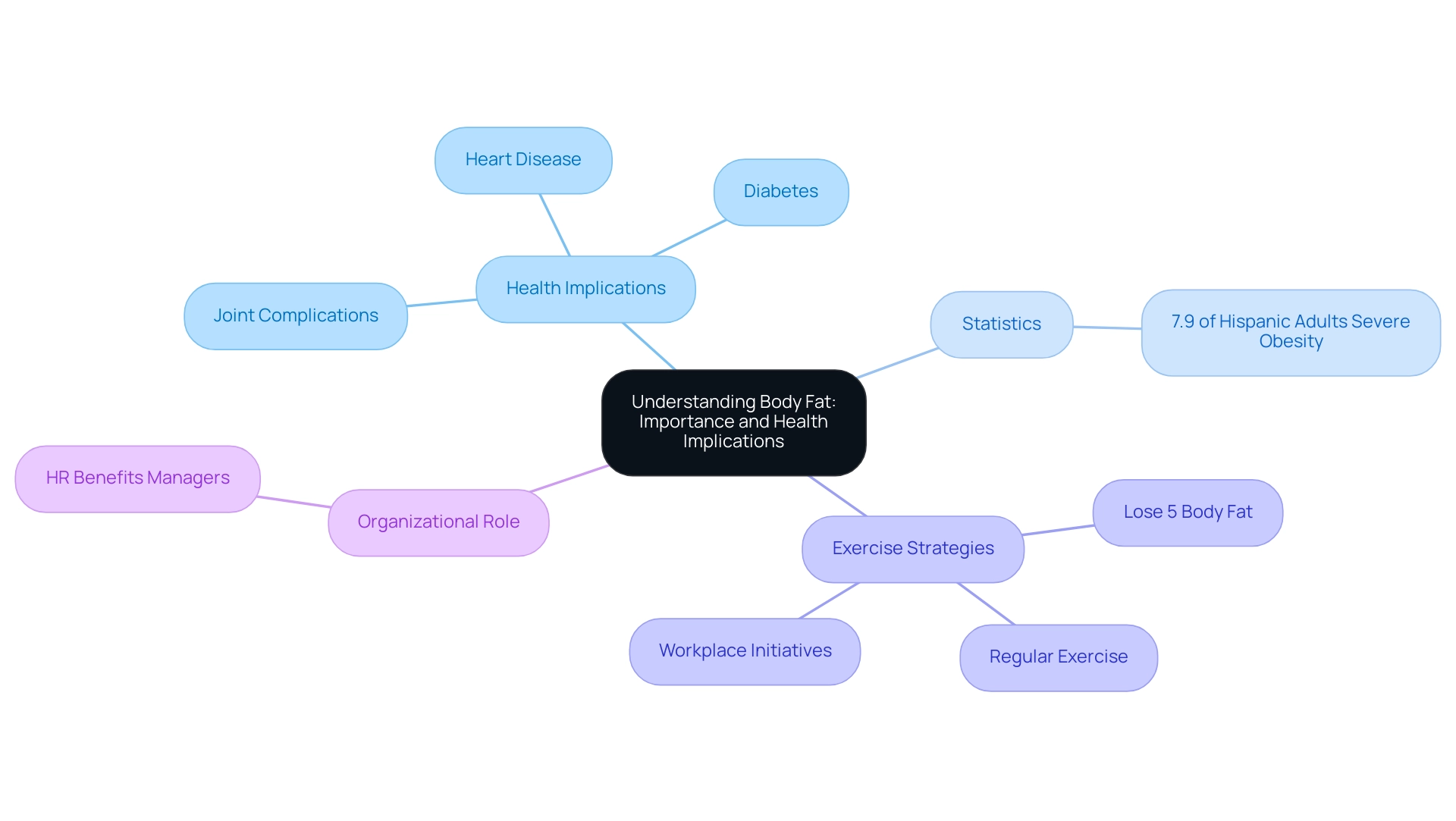
Creating a Caloric Deficit: The Key to Fat Loss
Establishing a caloric deficit is crucial for effective fat reduction, especially when you want to learn how to lose 5 percent body fat in 2 weeks, and it begins with comprehending your body's energy requirements. Begin by calculating your Total Daily Energy Expenditure (TDEE) using an online calculator. This figure will serve as your baseline for determining how many calories you burn in a day.
To understand how to lose 5 percent body fat in 2 weeks, aim for a healthy reduction of approximately 1 to 2 pounds weekly by decreasing your daily caloric consumption by 500 to 1,000 calories. Including muscle-strengthening activities a minimum of two days each week is essential for understanding how to lose 5 percent body fat in 2 weeks, as these exercises not only improve fat reduction but also assist in preserving muscle mass throughout your fitness journey. Tools like MyFitnessPal can be invaluable for tracking your food intake, ensuring you remain within your target range.
It's crucial to remember that consistency is key; implementing small, sustainable changes to your diet can show you how to lose 5 percent body fat in 2 weeks and lead to lasting results. The simplicity and flexibility of a calorie deficit diet, along with empowerment through education and the success stories shared on social media, have made it a popular choice among many. As you embark on this journey, keep in mind the advice to 'read food labels'—a fundamental step in making informed dietary choices.
Always consider consulting with healthcare professionals, particularly for individuals with specific medical conditions, to personalize dietary advice for safe and effective weight management.
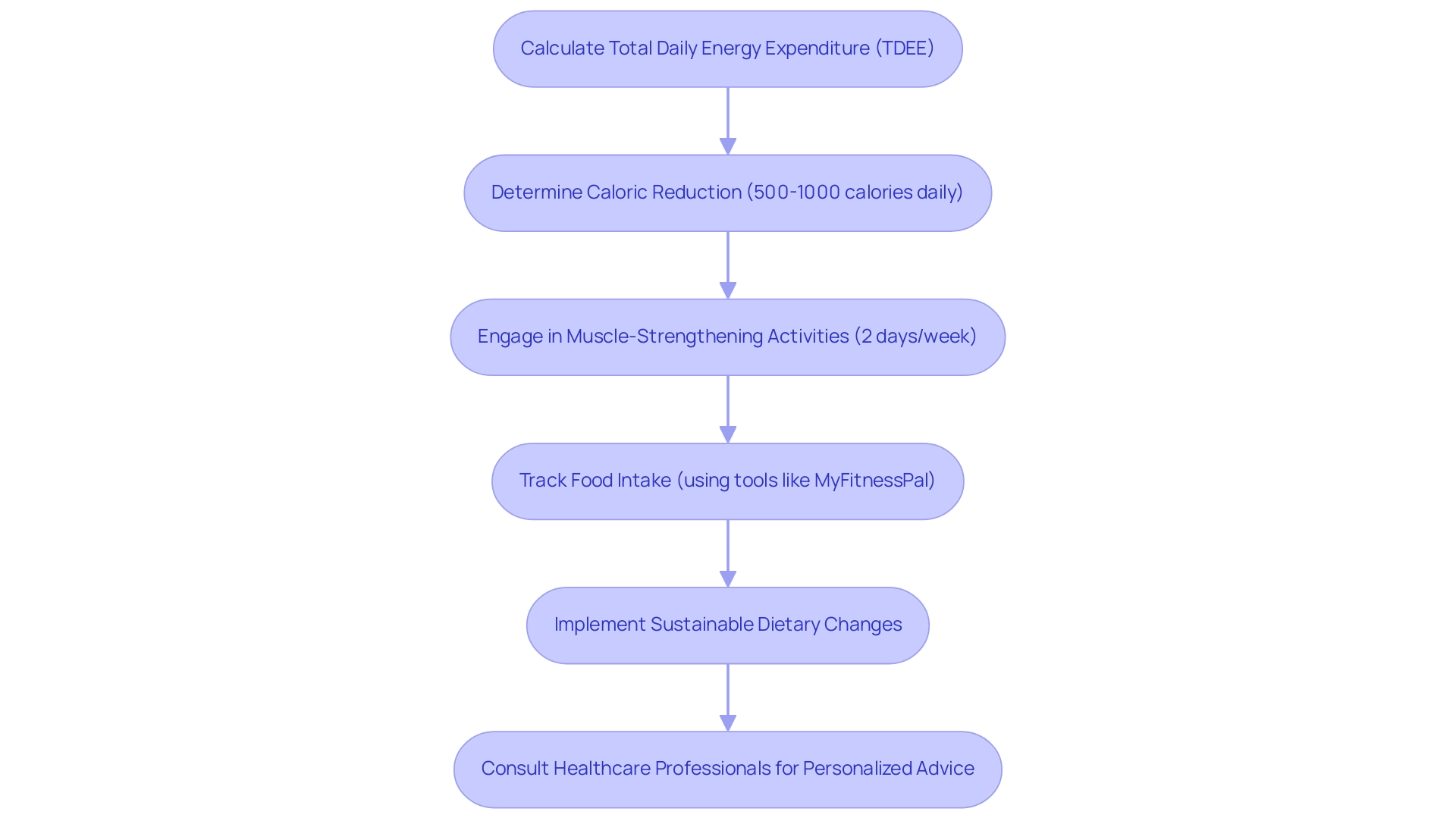
Nutrition Strategies for Effective Fat Loss
Emphasizing a balanced diet rich in whole foods is crucial for effective fat reduction, and learning how to lose 5 percent body fat in 2 weeks is equally important, along with incorporating personalized coaching from experienced coaches that drives lasting lifestyle changes. According to our clients, 'The personalized support I received transformed my approach to health,' highlighting the impact of tailored guidance. Motivate your team to incorporate lean proteins like chicken, fish, and legumes, which not only enhance satiety but also assist in preserving muscle mass while learning how to lose 5 percent body fat in 2 weeks.
To understand how to lose 5 percent body fat in 2 weeks, a focus on fruits, vegetables, and whole grains ensures that one receives essential nutrients while limiting processed foods, added sugars, and high-fat snacks that could derail progress. Meal prepping is a powerful strategy that aids in understanding how to lose 5 percent body fat in 2 weeks by ensuring healthy options are readily available, simplifying adherence to nutrition goals. According to recent guidelines, fats should constitute 20-35% of total daily calorie intake, making it vital to choose healthy fat sources wisely.
Furthermore, Loudcloudhealth indicates, 'According to research, when dieters experience sleeplessness for 14 days, the amount of loss from extra fat decreases by an astonishing 55%.' Thus, to shed pounds and maintain good health, a person needs to get enough sleep, which is crucial for understanding how to lose 5 percent body fat in 2 weeks alongside diet for effective loss of mass. Furthermore, the case study titled 'Weight Loss Success in North Carolina' illustrates that 35.67% of North Carolinians reduced their mass during the pandemic, suggesting that individuals were able to adapt their habits positively despite challenges.
Nourishing the body with the right foods is not just about how to lose 5 percent body fat in 2 weeks; it’s about fostering a healthier lifestyle overall. By integrating personalized health and wellness coaching into your team's well-being initiatives, you empower them to make every positive change in dietary habits count, contributing to a more energized and engaged workforce.
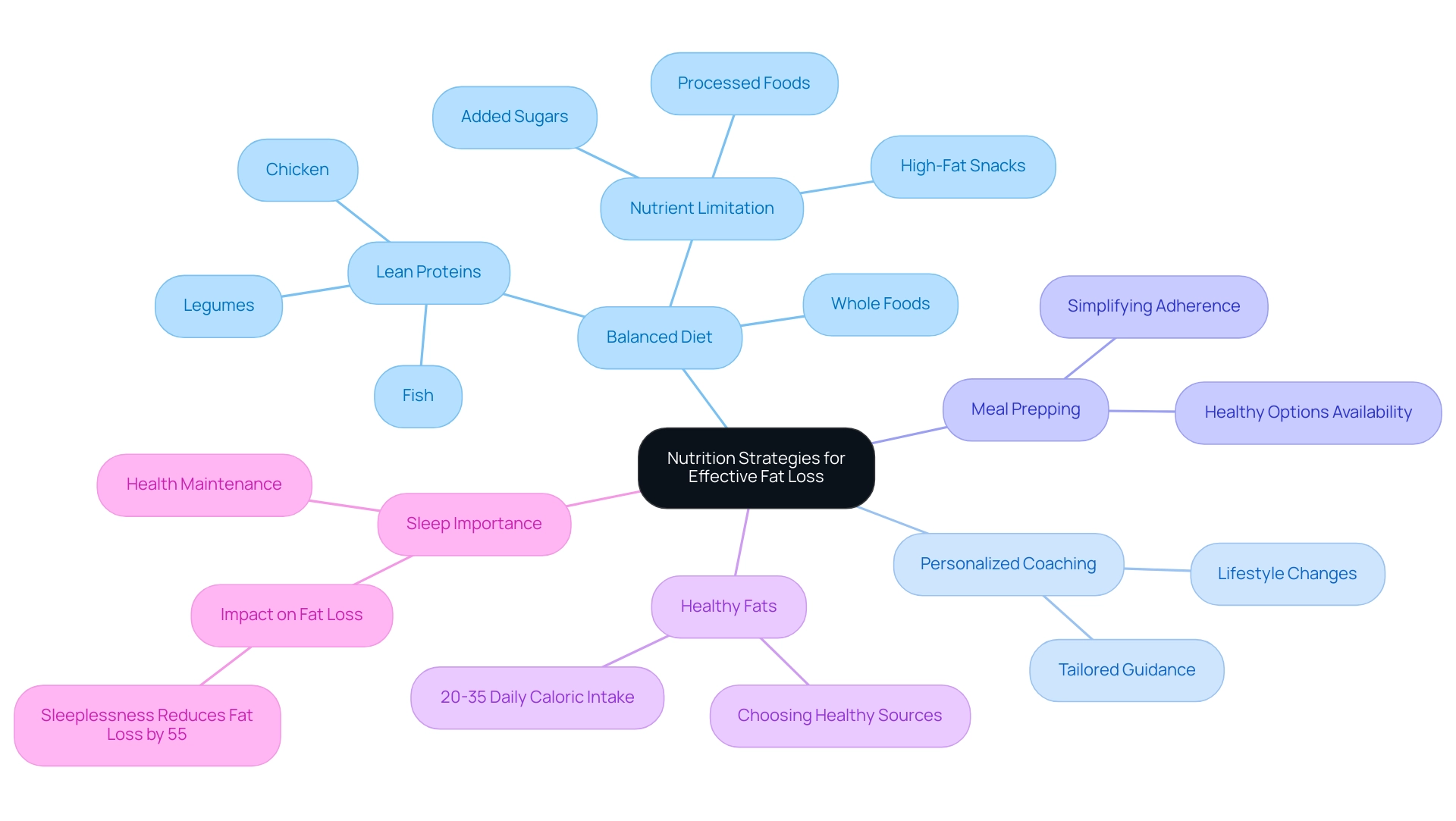
Incorporating Exercise: Effective Workouts for Fat Reduction
To effectively pursue rapid fat reduction and understand how to lose 5 percent body fat in 2 weeks, it’s essential to incorporate a balanced mix of cardiovascular and strength training exercises into your routine. Aim for a minimum of 150 minutes of moderate-intensity aerobic activity each week—activities such as brisk walking or cycling can be both enjoyable and beneficial. Significantly, 35.67% of North Carolinians reduced their mass during the pandemic, emphasizing the success of dedicated reduction strategies.
Alongside this, commit to strength training at least twice weekly, as building lean muscle not only enhances your physique but also significantly boosts your metabolism. The Essential Coaching Plan offers an exceptional value at just $67/month, providing expert-designed workout plans tailored to fit individual lifestyles and goals, making it an ideal resource for those aiming for weight reduction. The plan includes experience level options—Beginner, Intermediate, and Advanced—ensuring that users can choose a program that matches their fitness background.
Additionally, clients can customize their schedules with 2 to 5 workouts per week, making it easy to integrate fitness into a busy lifestyle. High-Intensity Interval Training (HIIT) emerges as a game-changer in this arena, demonstrating how to lose 5 percent body fat in 2 weeks by enabling you to burn fat efficiently in shorter workout sessions. Renowned fitness experts emphasize that HIIT can enhance your fat reduction journey and is a key method in learning how to lose 5 percent body fat in 2 weeks, making workouts both effective and time-efficient.
As Wiley states, 'The rise of obesity in the United States may slow or reverse the trend of increasing life expectancy,' highlighting the urgency of effective fat reduction strategies. Additionally, for those struggling to find time for exercise, incorporating short bouts of activity, such as several five-minute walks, can be beneficial. Remember, the key to sustained motivation lies in choosing activities you genuinely enjoy.
This approach will help you stay engaged and committed to your fitness journey, ultimately leading to remarkable results. Expert guidance is also a key component of the Essential Coaching Plan, ensuring that you receive the support needed to achieve your goals.
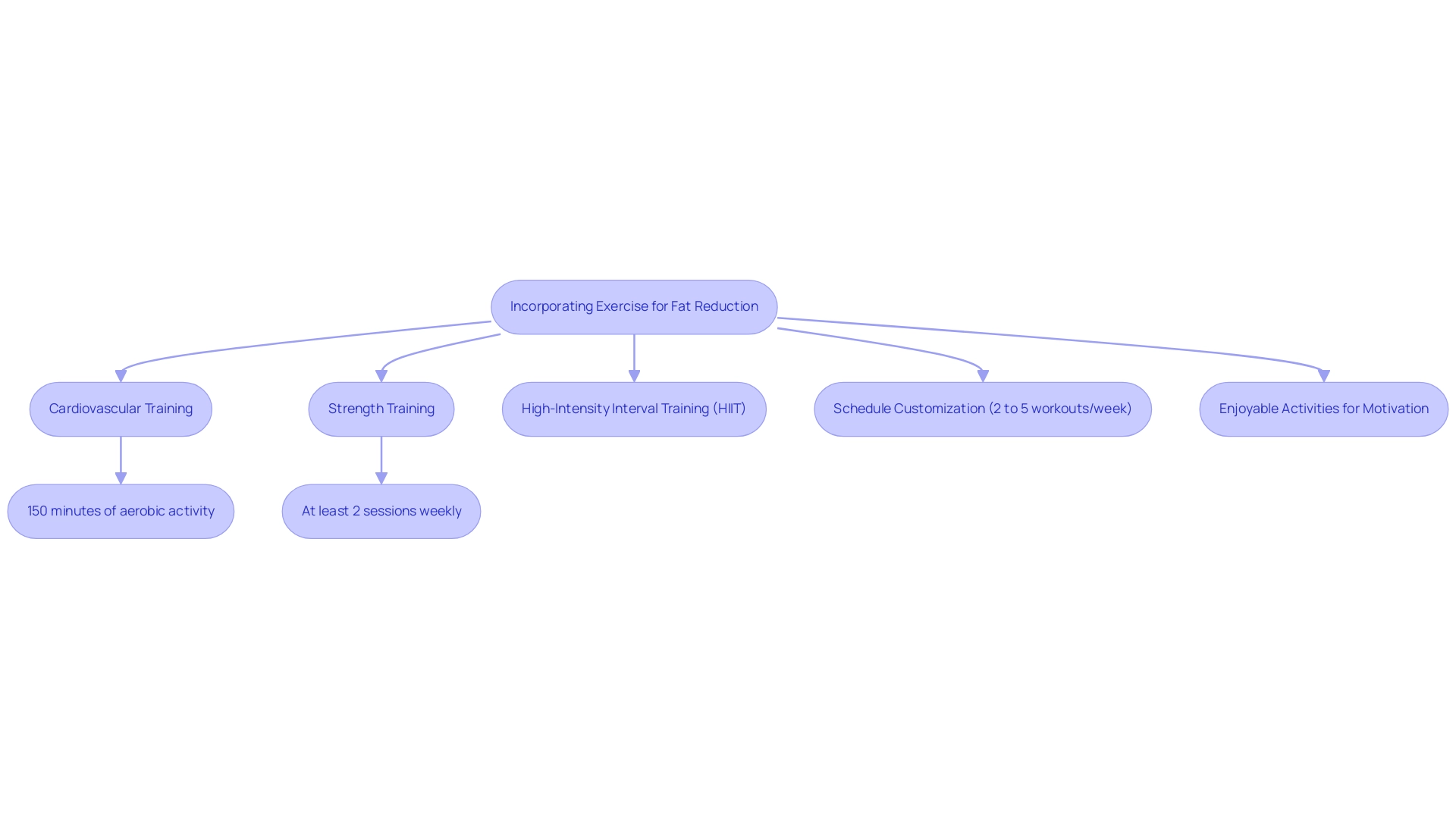
The Role of Sleep and Stress Management in Fat Loss
Understanding how to lose 5 percent body fat in 2 weeks requires prioritizing 7-9 hours of quality sleep each night, which is essential for effective fat loss. Inadequate sleep not only contributes to weight gain but can also significantly hinder your efforts on how to lose 5 percent body fat in 2 weeks. According to the CDC, insufficient sleep is a public concern, with 70 million Americans suffering from chronic sleep issues.
Establishing a calming bedtime routine and creating a sleep-friendly environment are key strategies to enhance sleep quality. Dr. Kimberly Truong, a Stanford-trained sleep physician and founder of Earlybird Health, emphasizes that ensuring adequate sleep is critical for maintaining overall well-being. Moreover, statistics show that for adolescents, each hour of reduced sleep is linked to a 38% rise in the likelihood of feeling sad and hopeless, highlighting the wider implications of sleep deprivation on mental well-being and its indirect effects on fat reduction.
Managing stress through mindfulness practices, such as meditation and yoga, plays a vital role in regulating cortisol levels, which can directly aid in understanding how to lose 5 percent body fat in 2 weeks. It’s crucial to remember that nurturing your mental health is just as important as focusing on physical health when learning how to lose 5 percent body fat in 2 weeks. With proper sleep and stress management, you can foster an environment that promotes both personal well-being and optimal weight control.
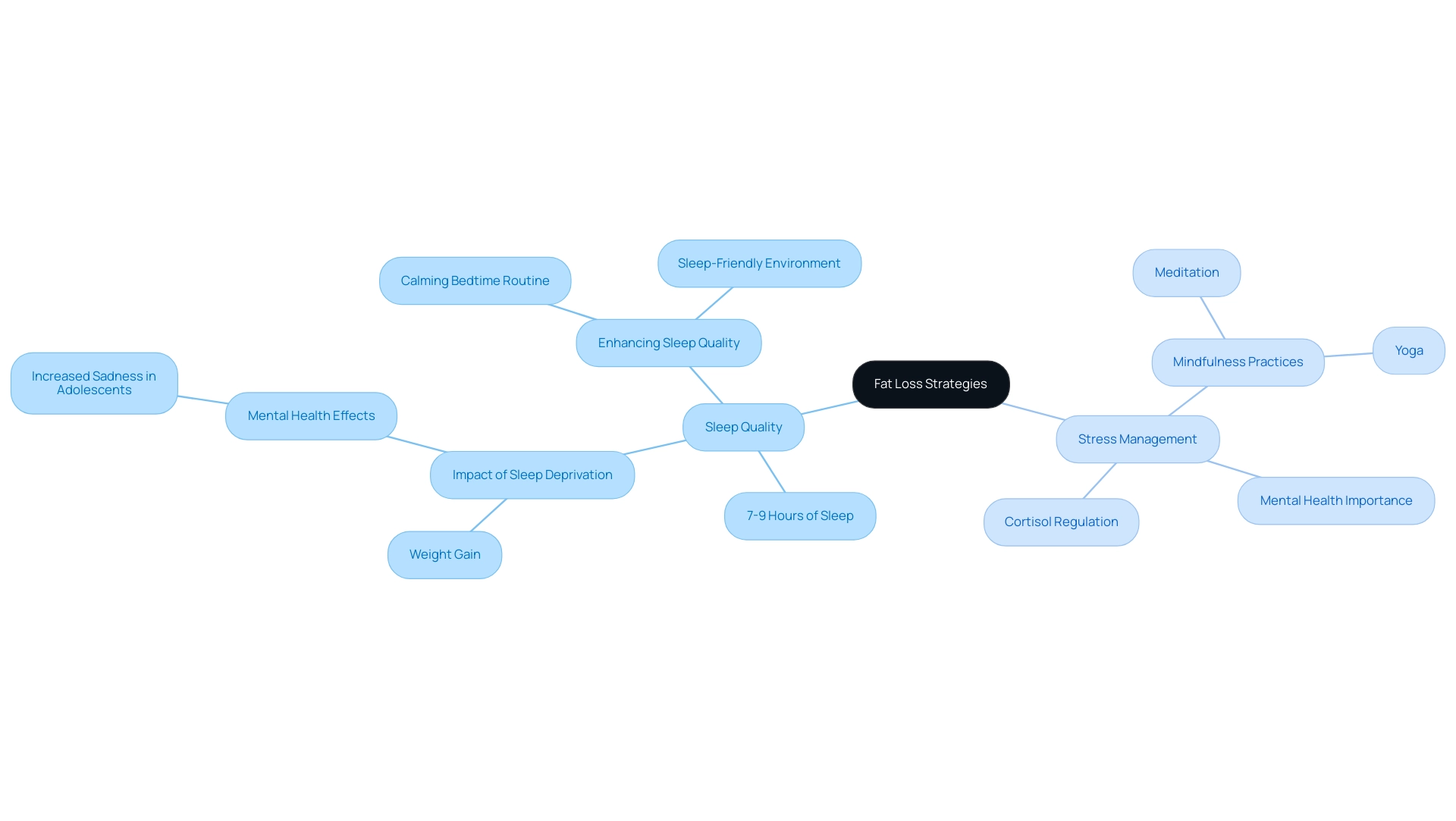
Conclusion
Understanding the intricate relationship between body fat, nutrition, exercise, sleep, and stress management is paramount for fostering a healthier workplace. Excess body fat is not merely a personal issue; it poses serious health risks that can adversely affect productivity and morale within teams. By implementing effective fat loss strategies, organizations can empower their employees to enhance their physical health, leading to greater emotional resilience and overall workplace satisfaction.
Creating a caloric deficit, prioritizing balanced nutrition, incorporating regular exercise, and managing sleep and stress are all essential components of a successful health initiative. Each aspect contributes to a culture of health that benefits both individuals and the organization. HR Benefits Managers have a vital role in promoting these strategies, ensuring that employees have the resources and support necessary to achieve their health goals.
As organizations take proactive steps to address these issues, they not only improve the well-being of their employees but also foster a more dynamic and engaged workforce. The ripple effect of prioritizing health within the workplace is significant, leading to reduced absenteeism, enhanced morale, and ultimately, a thriving organizational culture. Now is the time for HR leaders to champion these initiatives, creating an environment where health and well-being are at the forefront, benefiting everyone involved.




